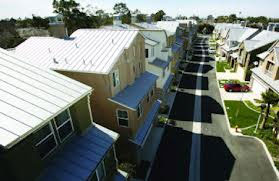Los Angeles could be a lot "whiter" in coming years because its Mayor wants cool roofs added to the city’s building code.
Besides directing the Department of Building and Safety to take this step, Mayor Antonio Villaraigosa is also asking the Department of Water and Power (LADWP) to create incentives that make it financially attractive for homeowners to install cool roofs.
Cool roofs are in California’s first-in-the-nation mandatory Green Building Standards Code, CALGreen, which took effect in 2011.
Villaraigosa made the decision based on a report, Bright Roofs, Big City, which analyzes potential energy savings and other environmental benefits from widespread adoption of cool roofs in Los Angeles.
The authors find that cool roofs on new and existing buildings would reduce the heat island effect, save $30 million a year on energy bills and cut greenhouse gases the equivalent of taking 7 million cars off the road for a year – 80% of LA’s carbon footprint.

This estimate is based on saved electricity costs alone. It doesn’t factor in other benefits, such as increased roof longevity or reduced health care costs from fewer asthma attacks and heat-related injuries and deaths, says the report.
Reducing the heat island effect is important – reflecting more of the sun’s light and heat away from buildings significantly lower urban temperatures, resulting in less air conditioning use and even smog.
Mayor Villaraigosa is leading on cleantech. His recent accomplishments include weaning the city off coal-fired power plants; strongly promoting electric cars; approving the first solar feed-in tariff for a major city; switching all street lights to LEDs; and establishing a cleantech corridor.
Since 2005, when he took office, renewable energy has grown from 3% to 20% in Los Angeles.
NYC also has cool roofs program and a sweeping green buildings program.
The report, Bright Roofs, Big City was produced by UCLA Law’s Emmett Center on Climate Change and the Environment:
